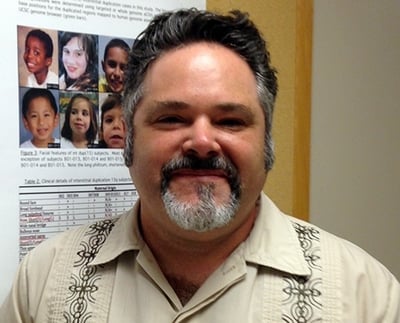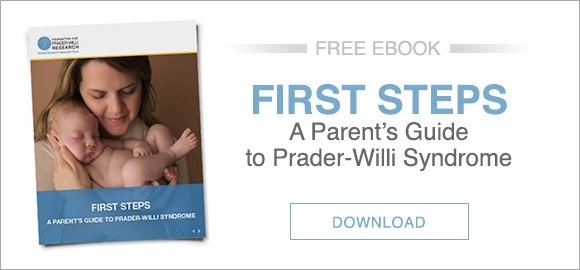 You may have seen requests for parents to donate the lost baby teeth of their children with PWS for research. What can these baby teeth do for Prader-Willi research? The answer is that Dr. Lawrence Reiter has implemented a novel technique for studying the genetics of Prader-Willi syndrome (PWS) based on special stem cells contained in the interior of teeth, research funded by FPWR. We spoke with Dr. Reiter recently about his work and life, and learned all about the exciting research he is conducting using teeth to decode the workings of PWS.
You may have seen requests for parents to donate the lost baby teeth of their children with PWS for research. What can these baby teeth do for Prader-Willi research? The answer is that Dr. Lawrence Reiter has implemented a novel technique for studying the genetics of Prader-Willi syndrome (PWS) based on special stem cells contained in the interior of teeth, research funded by FPWR. We spoke with Dr. Reiter recently about his work and life, and learned all about the exciting research he is conducting using teeth to decode the workings of PWS.
Early Research
Dr. Reiter became interested in biology back in high school, studying Drosophila melanogaster (i.e., fruit flies) in his Advanced Placement Biology class. His sense of innovation was evident even at this early stage, when he designed tiny rafts to save the flies from drowning in the wet, mushy food on which they were grown. He was exposed to molecular biology in college at the University of Southern California, where his study of Drosophila continued in the lab of Carol Miller, this time in extracting a protein from fly heads that reacted with a particular type of antibody.
Out of college, Dr. Reiter volunteered as a teacher in New Orleans for Teach for America, and then got a job as a technician in a lab at LSU Dental School (perhaps planting the seeds for his future research on teeth!). During graduate school at Baylor College of Medicine in the Department of Molecular and Human Genetics, Dr. Reiter used DNA sequencing methods to study the detailed molecular processes that cause Charcot-Marie-Tooth (CMT) disease. This genetic disorder results from a duplication on the 17th chromosome, which manifests as problems with the peripheral nervous system (just to clarify, “Tooth” is the last name of one of the co-discoverers of CMT). It was during graduate school that Dr. Reiter was first exposed to PWS and Angelman syndrome, at a weekly departmental seminar run by one of his professors, Dr. Arthur Beaudet. For his postdoctoral research at the University of California, San Diego, Dr. Reiter returned to the study of Drosophila, this time as a genetic model of human disease. Indeed, 75% of the genes that cause disease in humans have analogs in the DNA of flies.
Focus on Chromosome 15
Currently, Dr. Reiter is an Associate Professor at the University of Tennessee Health Science Center (UTHSC), and the Director of the 15q Duplication Autism Clinic at Le Bonheur Children’s Hospital. He runs a lab that focuses on the molecular basis of genetic disorders of the 15th chromosome. Most of his prior experience has been with Angelman and 15q Duplication (dup15q) syndromes. Angelman syndrome is the mirror of PWS, in that it occurs when maternal DNA on the 15th chromosome are missing either through a deletion or uniparental disomy of the paternal chromosome. Dup15q syndrome is found in 3-5% of autism cases, making it the most common chromosomal abnormality associated with autism spectrum disorders (ASD). Over the past few years, Dr. Reiter has turned his attention to PWS, a natural extension of his past chromosome 15 research. Furthermore, he is exploring the connections between genetic disorders and autism, which is an important area of study for our community, as many individuals with PWS display some of the characteristic features of ASD.
Dental Pulp Stem Cells for PWS Research
And now, about those teeth and PWS: Several years ago, Dr. Reiter was attending the International Meeting for Autism Research (IMFAR). At the time, he was very interested in studying brain cells affected by genetic disorders, and searching for new techniques to generate such cells in the lab. A friend at IMFAR suggested the possibility of synthesizing brain cells from the stem cells found in the dental pulp of teeth, also known as dental pulp stem cells or DPSCs. (Stem cells are special cells that can differentiate into specific types, including brain, muscle, and blood cells). There are other techniques for generating PWS brain cells, which consist of taking skin cells from individuals with PWS, transforming them into stem cells, and then making brain cells from the “induced” stem cells. The DPSCs provide a more direct channel to brain cells, however, as that first step of transforming into a stem cell is not necessary.
After generating the PWS brain cells (neurons) in a dish, Dr. Reiter and his group are performing a close comparison of the way in which genes are expressed (i.e., translated into observable traits) in both PWS cells and control sample of non-PWS cells. Specifically, it is known that the SNORD116 gene is one of the most important genes missing in individuals with PWS. However, Dr. Reiter is studying how the lack of SNORD116 affects the expression of additional genes in neurons, drawn from both the PWS region of chromosome 15, and throughout the rest of the human genome. One unique aspect of this research is the goal of studying the difference in gene expression not only between PWS and non-PWS neurons, but also between PWS and PWS+ASD neurons (i.e., between cells drawn from individuals who have PWS both with and without the symptoms of autism). Given the novelty of using DPSCs to generate PWS brain cells, funding from FPWR has been crucial for generating initial results that can then be used to obtain funding from major agencies such as the National Institute of Health (NIH).
Baby teeth are still needed for this PWS research, especially from children with in PWS by UPD with a dual diagnosis of autism — click here to contact Dr. Reiter about donating your child's lost teeth.
Promise for PWS Drug Therapies
Dr. Reiter feels that characterizing gene expression in PWS brain cells may have real promise for future drug therapies. Specifically, one type of treatment based on “antisense oligonucleotides” can regulate the amount of expression of particular genes. Such exciting new therapies might be well-suited to PWS, once we understand exactly how genes are expressed differently in PWS and non-PWS cases. In his research, Dr. Reiter is thrilled to collaborate with Dr. Stefan Stamm, another FPWR-supported scientist. He is also incredibly grateful to all of the PWS families who have contributed baby teeth.
Outside of work, Dr. Reiter loves to travel. He and his wife have particularly enjoyed trips to St. Thomas and Aruba. Another hobby is rum, and his travels have included visiting a 400-year-old agricole (cane juice rum) distillery in the British Virgin Islands. Dr. Reiter also loves riding and refurbishing old motorcycles — he currently has 15 of them! — and watching his son play baseball.








